
Callionima nomius, the fan-tailed bark moth, is a moth of the family Sphingidae. The species was first described by Francis Walker in 1856.

Pachylia ficus, known as the fig sphinx, is a moth of the family Sphingidae. It lives from the northern tip of South America in Uruguay through Central America to the southern tip of the United States straying into Arizona and Texas.

Eumorpha anchemolus, the anchemola sphinx moth, is a moth of the family Sphingidae. The species was first described by Pieter Cramer in 1780.

Eumorpha capronnieri is a moth of the family Sphingidae first described by Jean Baptiste Boisduval in 1875.

Eumorpha satellitia, the satellite sphinx, is a moth of the family Sphingidae. The family was first described by Carl Linnaeus in 1771. It lives from Brazil and northern Argentina north through Central America, Mexico, and the West Indies to south Texas and southern Arizona.

Eumorpha vitis, known as the vine sphinx, is a moth of the family Sphingidae.

Xylophanes ceratomioides is a moth of the family Sphingidae. It is known from Mexico, Belize, Costa Rica, French Guiana, Bolivia, Argentina and Venezuela, down into southern Brazil. Rare vagrants have been found up to southern Arizona.
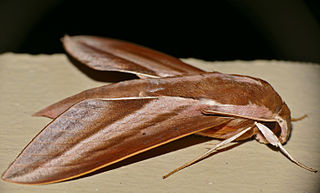
Theretra suffusa is a moth of the family Sphingidae.
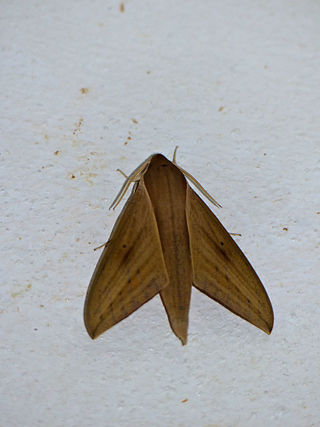
Theretra rhesus is a moth of the family Sphingidae. It is known from Malaysia, Indonesia and the Philippines.
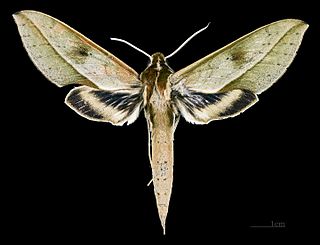
Xylophanes cyrene is a moth of the family Sphingidae first described by Herbert Druce in 1881. It is found in Mexico, Panama, Costa Rica, Guatemala, Belize and south to Oxapampa in Peru.

Xylophanes guianensis is a moth of the family Sphingidae.

Xylophanes media is a moth of the family Sphingidae first described by Walter Rothschild and Karl Jordan in 1903.
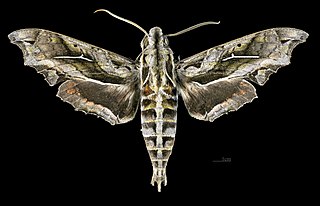
Hemeroplanes longistriga is a moth of the family Sphingidae.

Oryba kadeni is a moth of the family Sphingidae first described by Schaufuss in 1870.

Isognathus leachii is a moth of the family Sphingidae.
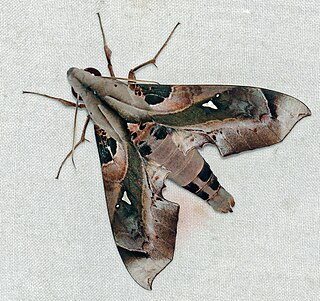
Madoryx plutonius is a moth of the family Sphingidae.
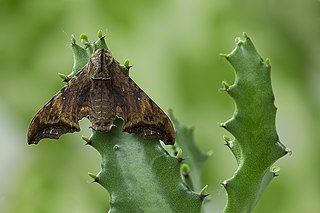
Nyceryx riscus is a moth of the family Sphingidae.
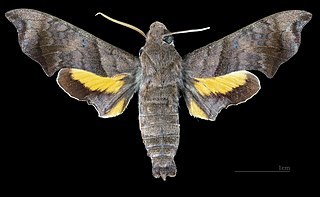
Perigonia pallida is a moth of the family Sphingidae first described by Walter Rothschild and Karl Jordan in 1903.

Eumorpha obliquus is a moth of the family Sphingidae. It is found from Belize, Guatemala, Nicaragua and Costa Rica south to Bolivia. It is also present in Brazil and Guadeloupe.

Ambulyx sericeipennis, the common gliding hawkmoth, is a species of moth of the family Sphingidae first described by Arthur Gardiner Butler in 1875. It is found from northern Pakistan and northern India eastwards across Nepal, Sikkim, Bhutan, Myanmar, Thailand, Laos, Cambodia and Vietnam to central and southern China and Taiwan.
























